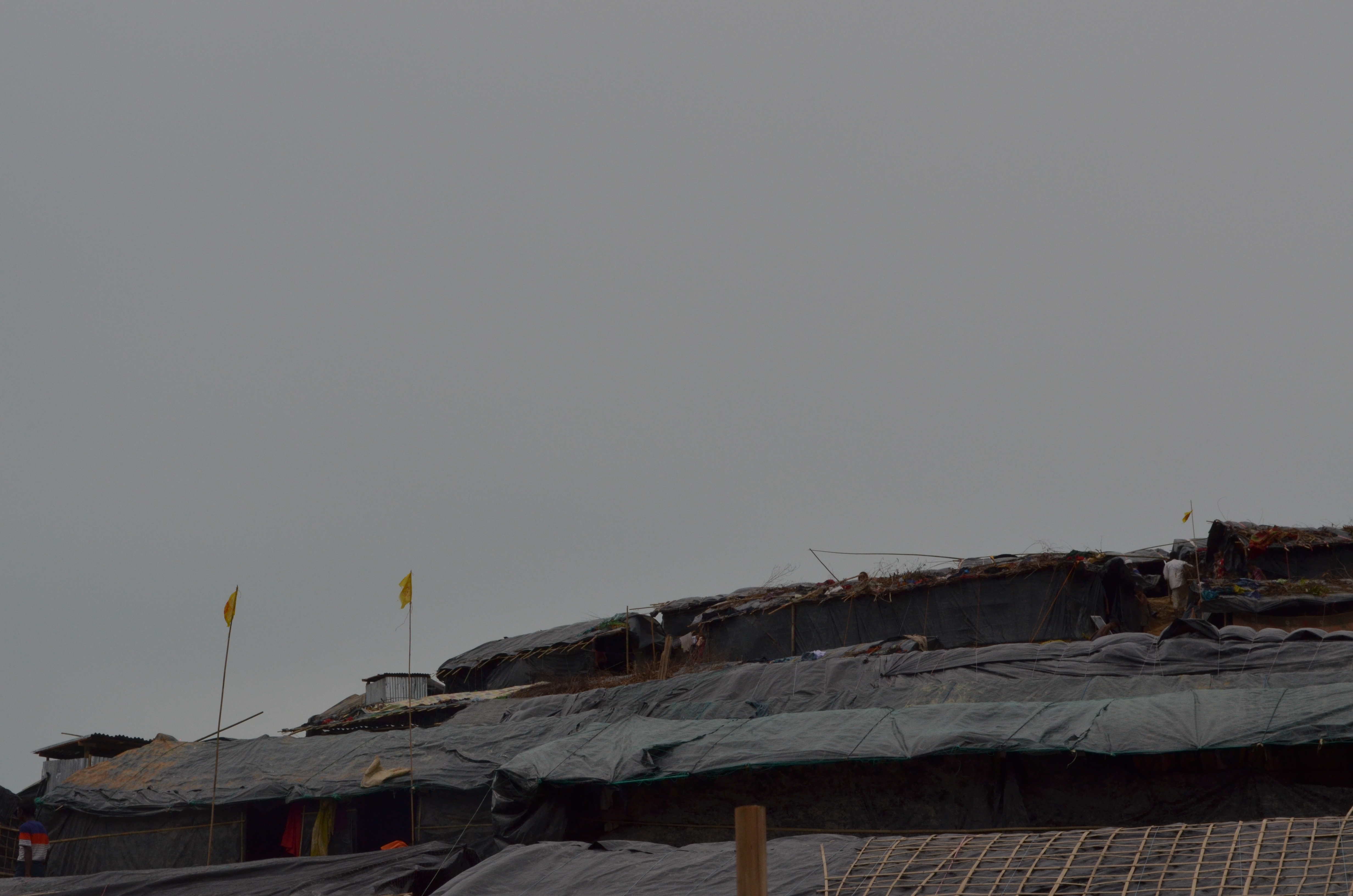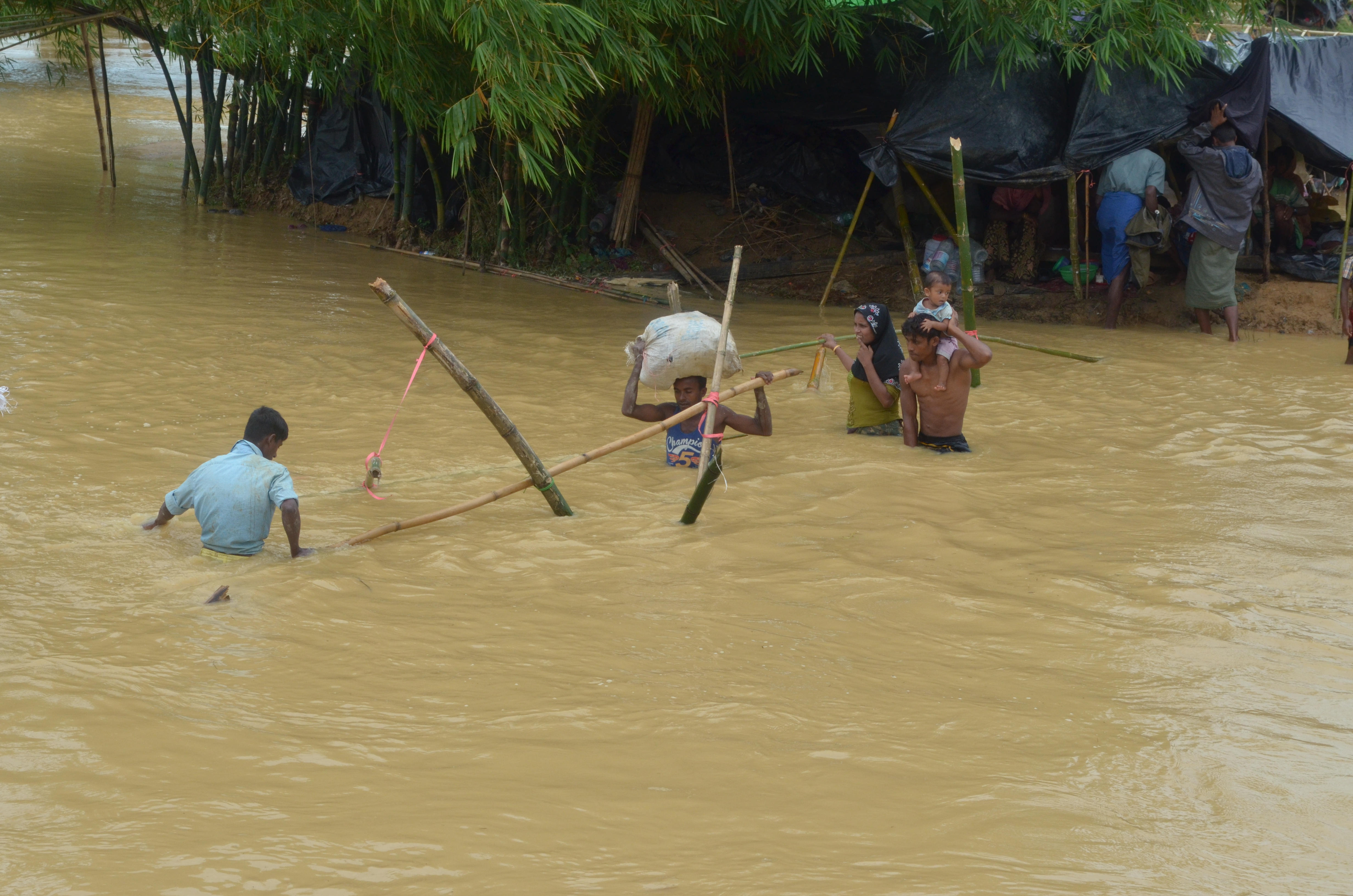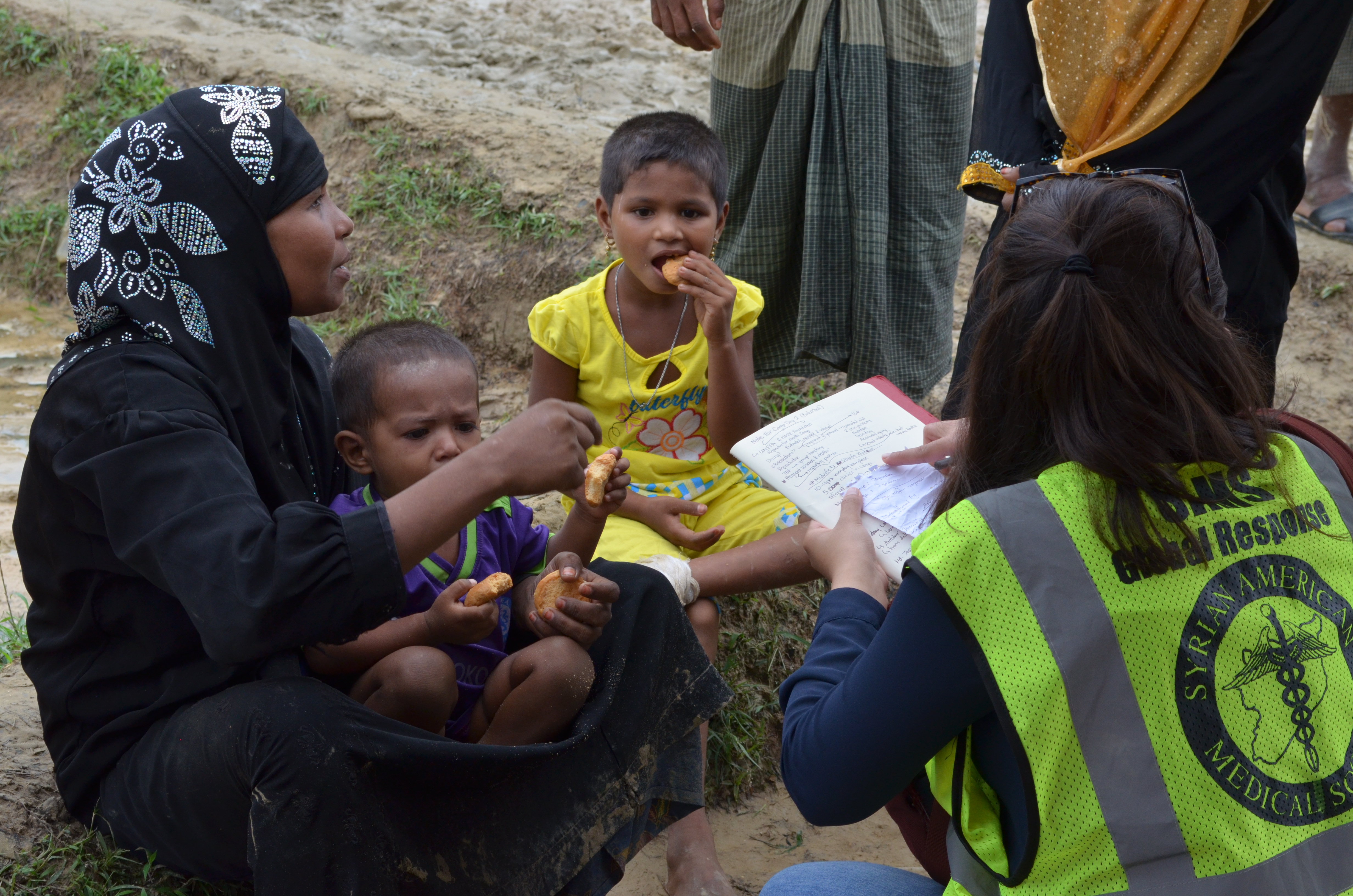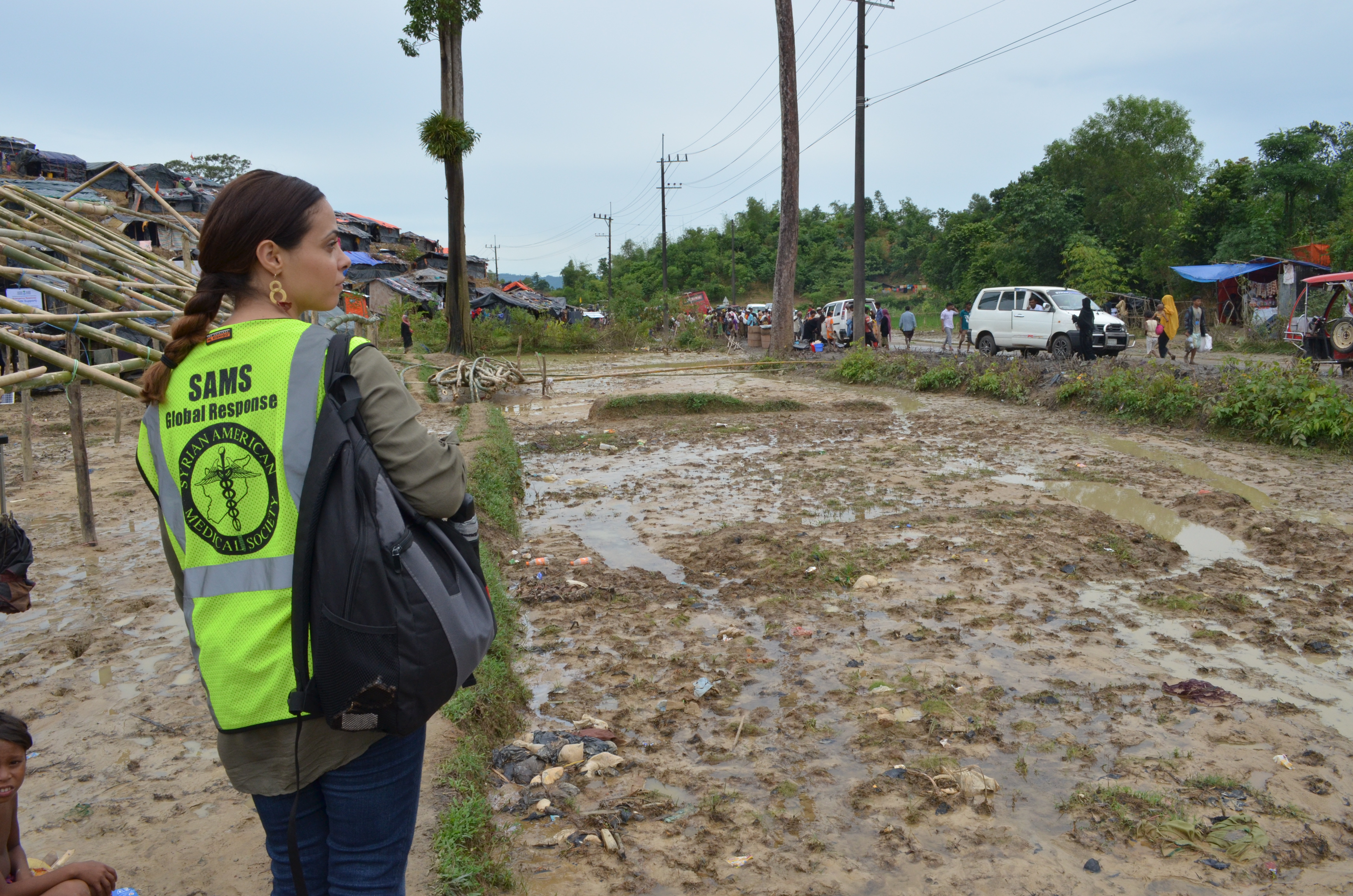October 4, 2017
As soon as we arrived to Balukhali camp in Cox’s Bazar, we witnessed massive floods surrounding tents like islands, with Rohingya refugees attempting to swim to the main road for safety.
“This flooding is caused by last night’s rainfall” remarked Mrs. Khatun.
As part of our needs assessment trip to Bangladesh, SAMS Global Response (SGR) Chair Dina Prior and I visited two camps housing Rohingya refugees fleeing from violence and persecution in neighboring Myanmar. We partnered with a local organization, Gonoshasthaya Kendra (GK), working with Drs. Al Salem and Kabir to provide medical relief and assess the situation on the ground. At the Balukhali camp, GK’s clinic is based in a tent close to the main road. Tents housing Rohingya are situated on steep hilltops, atop muddy ground.
SAMS’s Dr. Al Salem and Dr. Kabir immediately got to work at the clinic, assessing patients and taking surveys from refugees to gauge their demographics, food, shelter, health, and other needs.
Dina and I came across a mother with a baby and child, holding a prescription she received from one of the NGO clinics. When we approached her and asked her if she had received the necessary medications for her health concerns, she looked confused and said she did not know where to go. We took her to Dr. Al Salem and Dr. Kabir at the GK clinic and she finally received the medications. This was not the first such case we came across that day. During our transect walk, Dina also observed that about 1 in 5 women in the camp were pregnant.
From our key informant interviews, we found that mortality rates were not being reported in an official manner, aside from stories shared by refugees. Certainly, many have died, but who is keeping track? There were stories of death in every single family, but no quantifiable values. What is being done with the dead bodies, of the women and children and babies? How are they being buried and who is monitoring them? These were questions to which we did not know the answer.
After another hour of walking around, the SGR team reunited. The four of us walked up the hilltops with a GK volunteer and Mostafa Haque to observe the other side of the camp—away from the main road.
Dina asked about the accessibility of the existing health care services, “How do the old and very ill get care? The clinic is so far.”
Mr. Haque pointed to yellow and red flags on tent rooftops, explaining that GK doctors placed these flags on tents that house non-emergency patients.
GK’s flag system is separated into two colors—yellow and red; yellow designates new-borns and pregnant women, while red designates other patients in need of continual care. GK paramedics use these flags to check in on patients on a frequent basis. Still, many of the Rohingya are too frail to walk to the clinics in the first place and some do not have friends or family to send for medical help on their behalf

On our way back from the camp, we could see greenery in the distance as we drove along the main road; this was the Bangladesh-Myanmar border and the direction from which the Rohingya were fleeing. In the sky above, we saw smoke billowing from the same direction. I imagined Rohingya villages being burned down and felt angry, saddened, and motivated all at the same time.
Mr. Haque and Mrs. Khatun described the camp demographics to us, which showed the extent of persecution and violence the refugees faced in Myanmar.
“If you took a look around, you probably noticed a low percentage of females from the ages of 15 to 25. Likewise, many working-aged men 18 to 40 are missing. This is probably a Burmese military strategy—kidnapping and killing these men and women in particular,” they said, adding that they were still investigating this demographic trend.
With this troubling observation, our needs assessment came to a close.
Dr. Al Salem and Dr. Kabir continue to provide SGR’s medical work on ground in Bangladesh. On the flight back to Greece, Dina and I reflected on the highlights and lessons from the trip. With compassionate and skilled doctors by our side, we felt equipped and eager to provide care and relief in Bangladesh.
Sarah Rahman is the current SGR Program Officer for the emergency rapid needs assessment SGR mission in Bangladesh. A recent graduate of Wesleyan University, she is pursuing a career in medical humanitarian aid and global health, with an interest in working with vulnerable populations.






